In West Virginia, it is possible to spot 6 different species of Hawks. These are:
- Red-Tailed Hawk
- Broad-winged Hawk
- Red-Shouldered Hawk
- Sharp-shinned Hawk
- Cooper’s Hawk
- Rough-legged Hawk
Want to learn more? This book on the Birds of Prey of North America is a fantastic read!
Located in the heart of the Appalachian Mountains, West Virginia offers the type of highland vistas and tall trees in which birds of prey like hawks thrive.
A decidedly outdoorsman culture by modern standards, many of their habitats have been preserved in the Mountain State. This list details the haws you can find in West Virginia, with details on appearance, migration, and nesting behavior.
Want to attract birds of prey to your yard? Take a look at our article!
What Hawks can be seen in West Virginia?
1. Red-Tailed Hawk
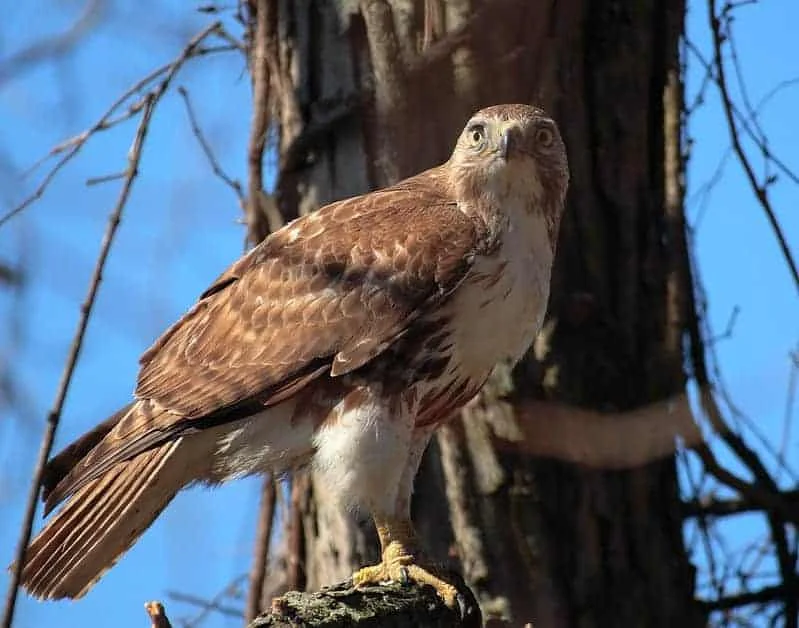
Found in every state in the US, this is the most abundant hawk in North America. Red-tails are adaptable in most environments, as comfortable in secluded mountain woods as they are hunting next to expressways and around neighborhoods.
Like most of its kind, the red-tail will remain in the mountains when it’s cool out and find lowlands when the winter comes. Look for its trademark red tail, a gathering of bright colors at its base, with subdued dark browns about its back, cape, and crown, with a white-brown underbelly.
Beyond being among the largest of the North American raptors, red-tailed hawks can also be recognized by their distinct shriek of a call, which is often used in place of other hunter birds with lesser calls in film.
2. Red-Shouldered Hawk
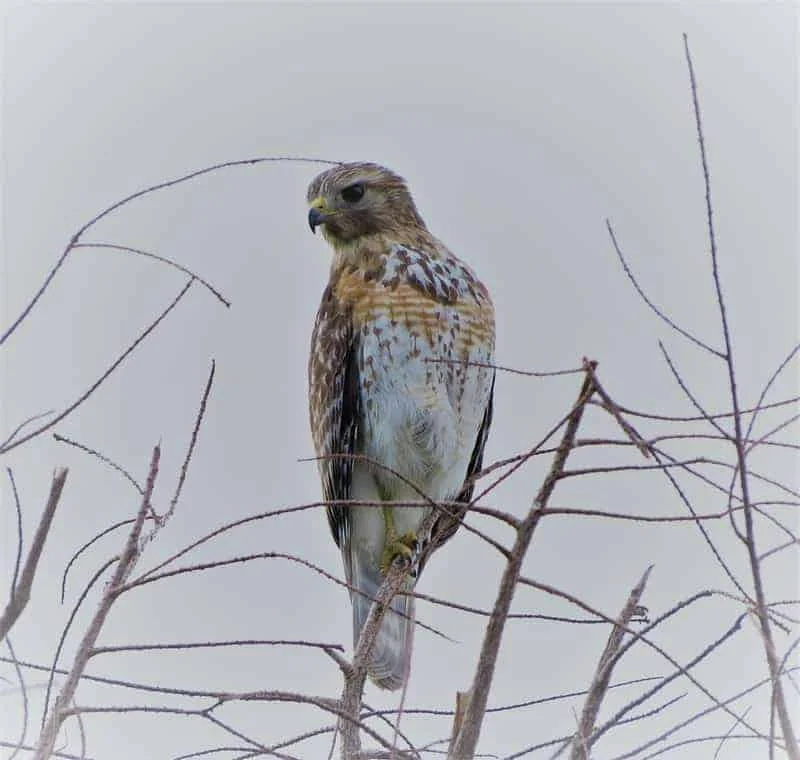
This is another rare US breeder, though less frequent than the broad-winged hawk, which finds its way into the mountains of West Virginia all year round.
Color patterns vary widely for this raptor beyond the trademark orange-red feathers on the shoulder, which often covers part of the neck, face, and head.
Many fit the common mold of dark brown or gray on the exterior with speckled white with the same color underneath, and some have a black and white striped pattern on the wingtips and tail.
These are woodland hunters with no preference for tree types, as long as it’s near a river or other lowland water source that attracts food.
3. Broad-winged Hawk
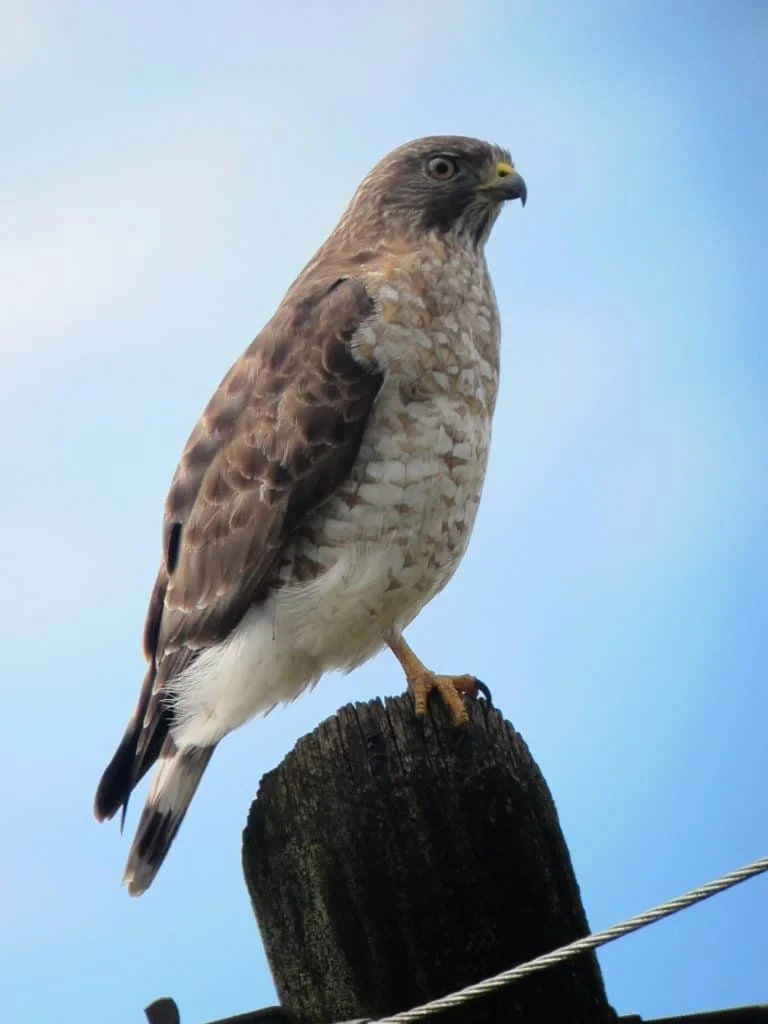
This is the rare North American bird that breeds mostly in the US instead of Canada. Its preference for the climate of the Appalachians makes West Virginia even more of a home for this abundant year-round resident.
The name gives a good description of its most apparent characteristic, which can be seen from the ground whenever one of these raptors takes flight.
Up close, look for brown and white speckled patterns throughout the front contrasted by a darker version of that same color on the crown and back.
Another distinctive attribute of the broad-winged hawk is its tendency to move in enormous flocks of flocks called ‘kettles’, which can contain hundreds to thousands of these raptors as they move south together, hunting as they go.
4. Sharp-shinned Hawk
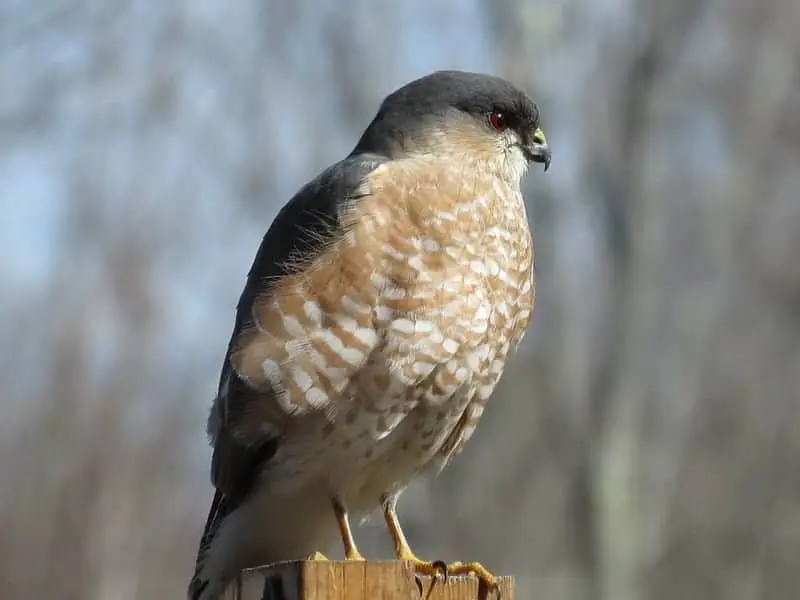
A smaller version of the Cooper’s Hawk, so-called “sharpies” have the same rust and white pattern with blue-gray coat on top. In fact, they are often mistaken for Cooper’s at a glance.
Sharpies adapt to woodland environments, though the preference is high-ground conifers overlooking places with abundant foraging opportunities for their prey.
They are mostly reclusive despite an affinity for backyard songbirds, seen in groups mostly migrations that begin in mid-fall. It will occasionally come out of hiding to strike a particularly enticing meal but rarely sticks around for viewing.
5. Cooper’s Hawk
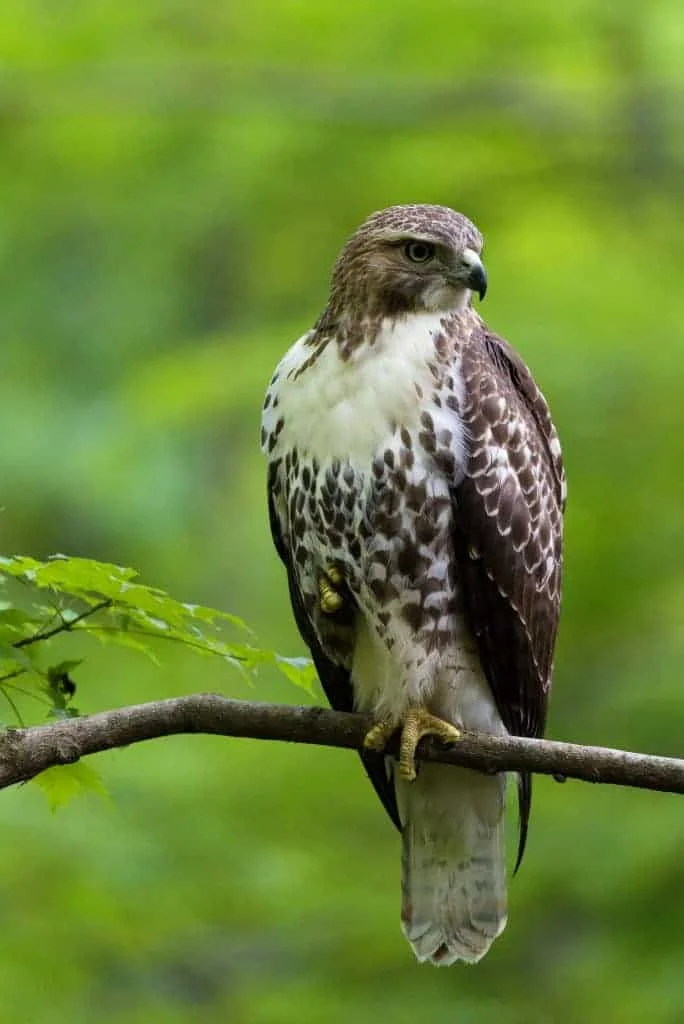
Though encountered less frequently than red-tailed hawks, this raptor also maintains a year-round presence throughout the mainland US.
A hunter of other birds, the coopers’ is known for their aerial prowess flying among places like the tall pines found in central West Virginia.
They will also hunt smaller birds at backyard feeders, meaning it is not entirely uncommon to catch a cooper’s hawk enjoying a meal outside your kitchen window.
Most morphs are blue-gray about the crown and back, with rust and white face and belly.
6. Rough-legged Hawk
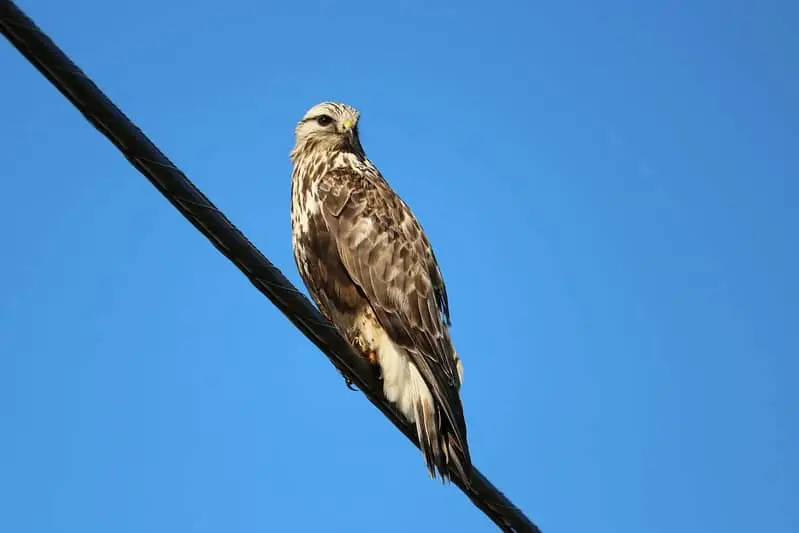
This is a true arctic raptor who breeds in the northernmost part of Canada, visiting the states in the heart of winter to follow the food.
As the highlands of West Virginia are of a similar climate to their homes, the rough-legged hawk will take up temporary residence until the spring thaw, when they fly back north.
Look for the feathers extruding from their base which gives this bird its ‘rough-legged’ appearance and its name. Elsewhere, morphs are usually a sporadic mix of brown and white specks; some are mostly white, others are mostly brown, and less commonly, all brown or white.
References

About Us
We are avid bird-watchers who recently retired, allowing us more time to travel the world. Fortunately, we have managed to visit numerous countries around Europe, Asia, and America. Watching and photographing birds has been a passion for many years and we are making the most of the extra time on our hands!
